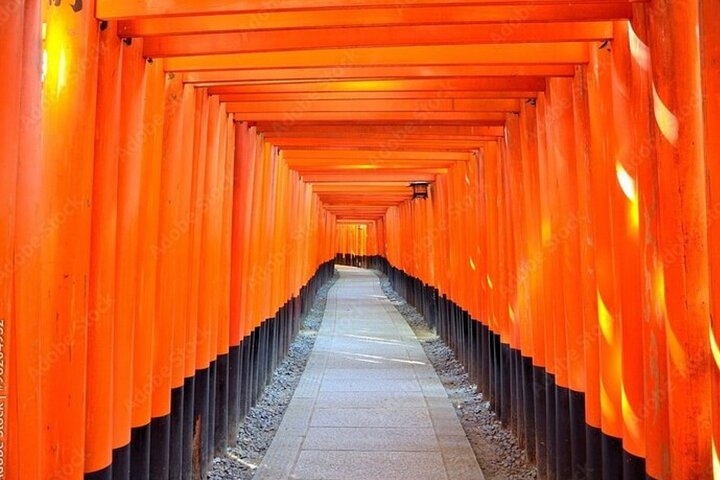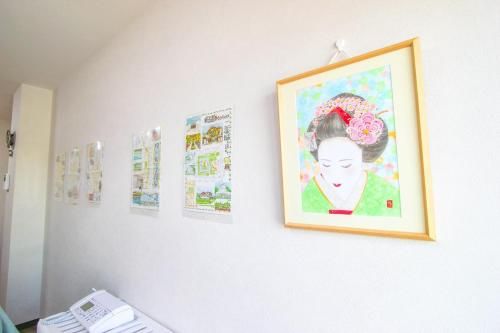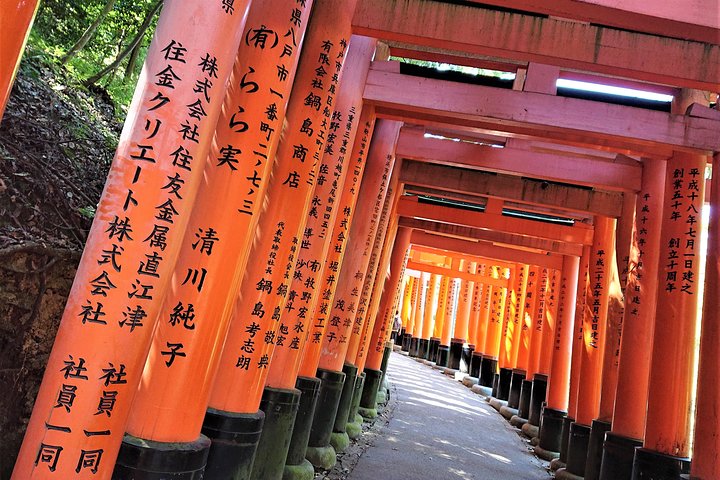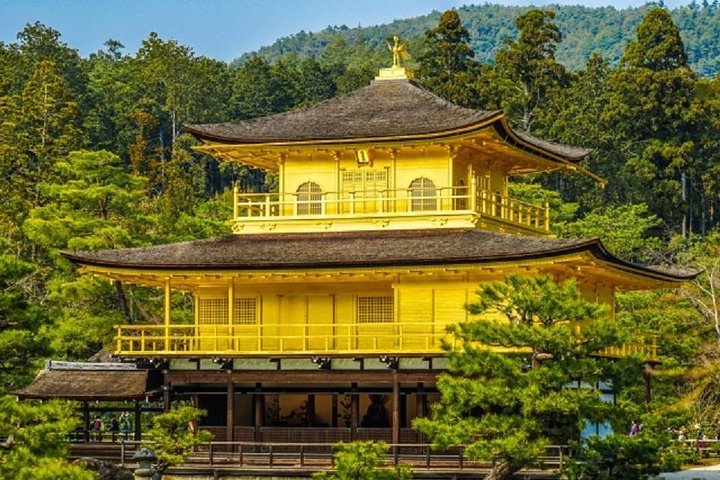Why choose this Kyoto tour ?
NOTE: Kindly choose any one Location KYOTO or OSAKA or NARA for tour. If you want to go all these places then book 3 days tour so all places Kyoto, Osaka, Nara.
We Can pick up all travelers from there own location in OSAKA, Kyoto, KOBE, NARA or Osaka kanasai airport or Osaka cruise terminal
Or book with us we will contact you & ask which place you want to go & we can ask your pick & drop of place.
Our tour is fully customizable you can add or skip any place.
Osaka itinerary
1 Osaka Castle
2-Shitennoji temple
3-Shinsekai
4-Sumiyoshi Taisha Shrine
5-Sakai City Hall Observatory Flour
6-Daisen Park
Kyoto itinerary
1. Arashiyama,
2. Kinkakuji Temple,
3. Kiyomizu-dera Temple
4. Fushimi Inari-taisha Shrine
5. Gion
6. Sanjusangendo Temple
7. Ginkakuji Temple
8. Nishiki Market Shopping District
Nara itinerary
1-Nara deer Park
2-Todai-ji Temple
3-Todai-ji Nigatsudo Kuden
4-Wakakusayama Hill
5-Horyu-ji Temple
6-Kasuga Taisha Shrine
7-Shinyakushiji Temple
8-Naramachi street
Make the most of your Kyoto adventure
What makes Kyoto, Osaka, Nara Full Day tour by Car English speaking Driver a unique experience ?
Arashiyama is the second-most important sightseeing district in Kyoto. It’s filled with temples and shrines, but the star attraction is the famed Arashiyama Bamboo Grove.
Arashiyama Bamboo Grove
The Arashiyama Bamboo Grove is one of Kyoto’s top sights and for good reason: standing amid these soaring stalks of bamboo is like being in another world
Tenryu-ji Temple
Tenryu-ji Temple is the headline attraction in Arashiyama, a sprawling Zen temple with one of the finest gardens in Kyoto and wonderful mountain views
Kameyama-koen Park
Escape the crowds and (if you’re lucky) mingle with the monkeys at Arashiyama’s lovely hilltop park, Kameyama-koen Park
Okochi-Sanso Villa
Okochi-Sanso Villa is one of the top sights in Kyoto. It rivals any of the city’s imperial properties, and you don’t need reservations to enter
Kiyomizu-dera Temple
Kiyomizudera (清水寺, literally “Pure Water Temple”) is one of the most celebrated temples of Japan. It was founded in 780 on the site of the Otowa Waterfall in the wooded hills east of Kyoto, and derives its name from the fall’s pure waters. The temple was originally associated with the Hosso sect, one of the oldest schools within Japanese Buddhism, but formed its own Kita Hosso sect in 1965. In 1994, the temple was added to the list of UNESCO world heritage sites.
Kiyomizudera is best known for its wooden stage that juts out from its main hall, 13 meters above the hillside. The stage affords nice views of the numerous cherry and maple trees below that erupt in a sea of color in spring and fall, as well as of the city of Kyoto in the distance. The main hall, which together with the stage was built without the use of nails, houses the temple’s primary object of worship, a small statue of the eleven faced, thousand armed Kannon.
Kinkakuji Temple
Kinkaku-ji, officially named Rokuon-ji, is a Zen Buddhist temple in Kyoto, Japan. It is one of the most popular buildings in Kyoto, attracting many visitors annually.
Fushimi Inari-taisha Shrine
Fushimi Inari Shrine (伏見稲荷大社, Fushimi Inari Taisha) is an important Shinto shrine in southern Kyoto. It is famous for its thousands of vermilion torii gates, which straddle a network of trails behind its main buildings. The trails lead into the wooded forest of the sacred Mount Inari, which stands at 233 meters and belongs to the shrine grounds.
Fushimi Inari is the most important of several thousands of shrines dedicated to Inari, the Shinto god of rice. Foxes are thought to be Inari’s messengers, resulting in many fox statues across the shrine grounds. Fushimi Inari Shrine has ancient origins, predating the capital’s move to Kyoto in 794.
Gion
Gion (祇園) is Kyoto’s most famous geisha district, located around Shijo Avenue between Yasaka Shrine in the east and the Kamo River in the west. It is filled with shops, restaurants and ochaya (teahouses), where geiko (Kyoto dialect for geisha) and maiko (geiko apprentices) entertain.
Gion attracts tourists with its high concentration of traditional wooden machiya merchant houses. Due to the fact that property taxes were formerly based upon street frontage, the houses were built with narrow facades only five to six meters wide, but extend up to twenty meters in from the street.
Sanjusangendo Temple
Sanjusangendo (三十三間堂, Sanjūsangendō) is the popular name for Rengeo-in, a temple in eastern Kyoto which is famous for its 1001 statues of Kannon, the goddess of mercy. The temple was founded in 1164 and rebuilt a century later after the original structure had been destroyed in a fire.
Measuring 120 meters, the temple hall is Japan’s longest wooden structure. The name Sanjusangendo (literally “33 intervals”) derives from the number of intervals between the building’s support columns, a traditional method of measuring the size of a building. In the center of the main hall sits a large, wooden statue of a 1000-armed Kannon (Senju Kannon) that is flanked on each side by 500 statues of human sized 1000-armed Kannon standing in ten rows. Together they make for an awesome sight.
1000-armed Kannon are equipped with 11 heads to better witness the suffering of humans and with 1000 arms to better help them fight the suffering.
Ginkakuji (銀閣寺, Silver Pavilion) is a Zen temple along Kyoto’s eastern mountains (Higashiyama). In 1482, shogun Ashikaga Yoshimasa built his retirement villa on the grounds of today’s temple, modeled after Kinkakuji (Golden Pavilion), his grandfather’s retirement villa at the base of Kyoto’s northern mountains (Kitayama). The villa was converted into a Zen temple after Yoshimasa’s death in 1490.
Nishiki Market Shopping District
Nishiki Market (“錦市場” in Japanese) is one of the most famous and busiest markets in Kyoto. Originally opened as a fish market during the Edo period (1603 – 1868), this lively market has served as a popular shopping district among locals for centuries. From JR Kyoto station, it is about a 5-minute subway ride and a 10-minute walk.
This shopping area stretches about 390 meters along Nishiki-koji Street, a stone-paved narrow street that crosses central Kyoto from east to west. Stalls and shops at Nishiki Market offer an endless array of food options, including Kyoto’s traditional specialties as well as reasonably priced delicious sweets.
Kyoto Imperial Palace
The Kyoto Imperial Palace (京都御所, Kyōto Gosho) used to be the residence of Japan’s Imperial Family until 1868, when the emperor and capital were moved from Kyoto to Tokyo. It is located in the spacious Kyoto Imperial Park (京都御苑, Kyōto Gyoen), an attractive park in the center of the city that also encompasses the Sento Imperial Palace, which served retired emperors, and a few other attractions.
Nijo Castle
Nijo Castle (二条城, Nijōjō) was built in 1603 as the Kyoto residence of Tokugawa Ieyasu, the first shogun of the Edo Period (1603-1867). His grandson Iemitsu completed the castle’s palace buildings 23 years later and further expanded the castle by adding a five story castle keep.
After the Tokugawa Shogunate fell in 1867, Nijo Castle was used as an imperial palace for a while before being donated to the city and opened up to the public as a historic site. Its palace buildings are arguably the best surviving examples of castle palace architecture of Japan’s feudal era, and the castle was designated a UNESCO world heritage site in 1994.
Eikando Zenrinji Temple
Eikan-do Temple is the main temple of the Jodo-shu Seizan-Zenrinji school. It began as a training temple of Esoteric Buddhism of Shingon sect in 853. Eikan, the 7th abbot, later converted the temple to Jodo sect. Of the many temple treasures the most intriguing one is perhaps the Mikaeri Amida Nyorai, Amida Buddha looking back over his shoulder.
Yasaka Shrine
There are several theories about the origin of Yasaka Jinja Shrine. According to the record of the shrine, the history of Yasaka Jinja Shrine may go back as far as 656 (Heian Era), the second year of the reign of Emperor Saimei. Irishi, an errand from Korea, brought the spirit of Susanoo-no-mikoto to this place.
Besides this vies, in Jogan Era, 876, a Buddhist priest from Nara Prefecture, Ennyo, had built a temple, and enshrined Susanoo-no-mikoto, the deity of the region
Tour Description & Additional Info:
- Infants and small children can ride in a pram or stroller
- Service animals allowed
- Public transportation options are available nearby
- Infants are required to sit on an adult’s lap
- Suitable for all physical fitness levels
Options To Choose for Your Trip:
- Hiace Van for 1 to 9 Person
Add
Hiace Van: all type of Van cars according to number of passengers
Pickup included - 1 to 9 person Hiace Van
Add
Hiace 10 seater: All type of Van car according to number of passengers
Pickup included - 1 to 6 Person
Add
Toyota ALPHARD : 1 to 6 person easily access
Pickup included
- Driver in person Tour Guide cost included
- Price Including Highway Toll Tax+ Gasoline
- Pick up & Drop off included
- English Speaking Driver/Guide
- Meet & Greet
- Van car
Not Included
- Entrance Fees • Accommodation Fees • Meals (Breakfast, Lunch, Dinner…)
- Entrance fees of any place or ride of any thing not included customer choice can skip or want to ho
Trending Kyoto Nearby Tours Likely To Sell Out
Special Instructions:
- This Tour is Provided by NIHON HORIZON TOUR.
- Tour Timezone & Starts at Asia/Tokyo.
- Mobile or paper ticket accepted.
- For a full refund, cancel at least 24 hours before the scheduled departure time.
- This Tour is Rated 3 Stars based on 11 valid reviews on VIATOR.
- Minimum 1 Travelers is required to book.
- Maximum 9 Travelers is accepted for booking.










